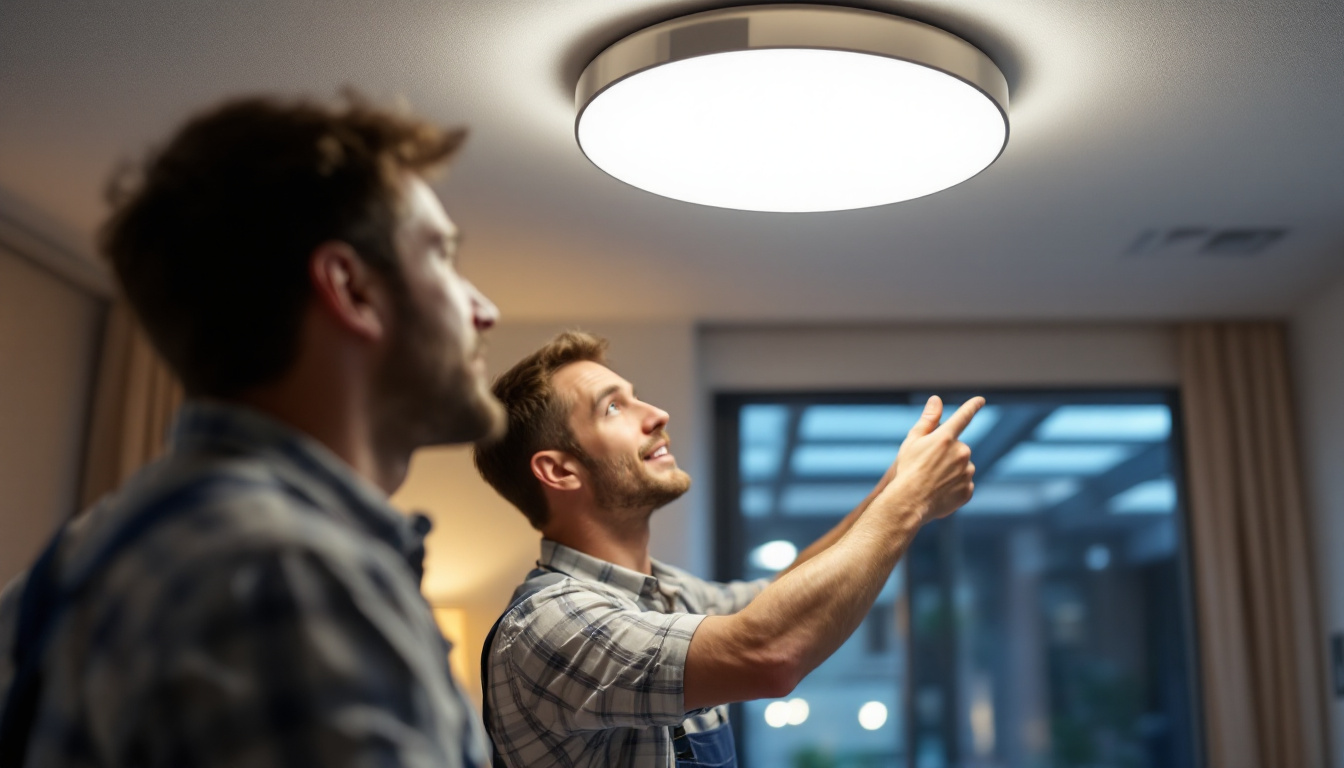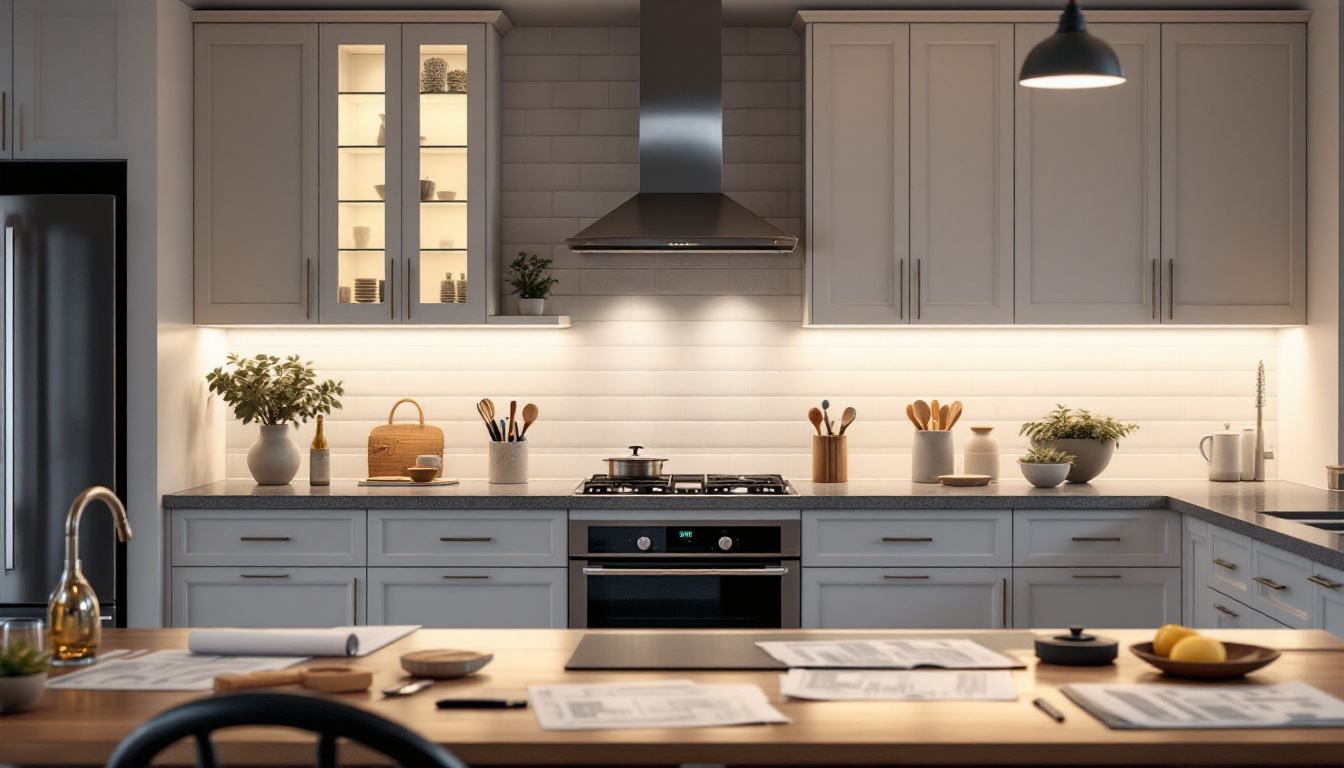
In the ever-evolving world of lighting solutions, LED technology has emerged as a frontrunner, offering energy efficiency, longevity, and versatility. For lighting contractors, understanding the nuances of LED lights is essential to provide clients with the best options available. This comprehensive checklist serves as a guide, ensuring that every aspect of LED lighting is covered, from selection to installation.
Before diving into the specifics of LED lights for sale, it is crucial to grasp the fundamentals of LED technology. Light Emitting Diodes (LEDs) are semiconductor devices that emit light when an electric current passes through them. This technology has revolutionized the lighting industry, providing solutions that are not only energy-efficient but also environmentally friendly. Unlike traditional bulbs that generate light through heat, LEDs produce light through a process called electroluminescence, which is more efficient and results in less wasted energy. This fundamental difference is what makes LEDs a cornerstone of modern lighting solutions, contributing to a significant reduction in carbon footprints across various sectors.
LED lights offer numerous advantages over traditional lighting options. One of the most significant benefits is their energy efficiency. LEDs consume significantly less power compared to incandescent and fluorescent lights, leading to lower electricity bills for clients. Additionally, they have a longer lifespan, often lasting up to 25,000 hours or more, which reduces the frequency of replacements. This longevity not only saves money but also minimizes the environmental impact associated with manufacturing and disposing of light bulbs. Furthermore, LEDs operate at cooler temperatures, which reduces the risk of burns and fire hazards, making them a safer choice for homes and businesses alike.
Another key advantage is their versatility. LEDs are available in various colors, shapes, and sizes, making them suitable for a wide range of applications, from residential to commercial settings. This adaptability allows contractors to cater to diverse client needs and preferences. For instance, warm white LEDs can create a cozy atmosphere in living spaces, while bright white LEDs are perfect for work areas that require focused lighting. Additionally, the ability to integrate LEDs with dimmers and smart home systems enhances their functionality, allowing users to customize their lighting experience to suit different moods and activities.
LED technology can be applied in numerous settings. In residential spaces, they are ideal for accent lighting, task lighting, and outdoor illumination. In commercial environments, LEDs are commonly used in office lighting, retail displays, and signage. Understanding these applications can help contractors recommend the right products for their clients. For example, in retail, the use of LED track lighting can highlight merchandise effectively, drawing customer attention and enhancing the shopping experience. Similarly, in outdoor settings, LED floodlights provide bright illumination for security purposes while being energy-efficient.
Moreover, the growing trend of smart lighting solutions has further expanded the possibilities for LED applications. Smart LEDs can be controlled remotely, allowing users to adjust brightness, color, and even scheduling, enhancing convenience and energy savings. These systems can be integrated with home automation platforms, enabling features such as voice control and automated lighting schedules based on occupancy. This level of control not only improves user experience but also contributes to energy conservation, as lights can be programmed to turn off when not needed. As technology continues to evolve, the potential applications for LED lighting will likely expand even further, paving the way for innovative solutions in both residential and commercial spaces.
When selecting LED lights for a project, several key factors must be taken into account. This ensures that the chosen products meet both the aesthetic and functional needs of the space.
Color temperature is a critical aspect of lighting design. Measured in Kelvin (K), it describes the appearance of the light emitted by the fixture. Warmer temperatures (2700K-3000K) create a cozy atmosphere, ideal for residential settings, while cooler temperatures (4000K-5000K) are often preferred for workspaces and retail environments. Understanding the desired ambiance will guide contractors in selecting the appropriate color temperature for their projects. Additionally, some LED lights offer adjustable color temperatures, allowing users to customize the lighting according to the time of day or specific activities, which can greatly enhance the versatility of a space.
Lumen output is another essential consideration. This measurement indicates the brightness of the light emitted by the LED. Different applications require varying levels of brightness; for instance, task lighting in kitchens may require higher lumens compared to ambient lighting in living rooms. Familiarity with lumen output will help contractors ensure that clients receive adequate illumination for their specific needs. Moreover, it’s important to consider the distribution of light as well; fixtures that provide a focused beam can enhance visibility in work areas, while diffused lighting can create a softer, more inviting atmosphere in social spaces.
Energy efficiency ratings, such as the Energy Star certification, are vital when choosing LED lights. These ratings indicate how much energy a light fixture consumes relative to its brightness. Selecting Energy Star-rated products not only benefits the environment but also appeals to clients who prioritize sustainability and cost savings. Furthermore, the longevity of LED lights—often rated for tens of thousands of hours—means that they not only reduce energy costs but also minimize the frequency of replacements, contributing to lower maintenance expenses over time. This aspect is particularly appealing for large-scale projects, where the cumulative savings can be substantial.
proper installation is crucial for maximizing the benefits of LED lights. Contractors must be aware of various installation techniques and best practices to ensure optimal performance and longevity.
LED lights may require specific wiring configurations, especially when retrofitting existing fixtures. It is essential to assess the compatibility of the LED lights with the current electrical system. In some cases, transformers or drivers may be necessary to ensure the proper functioning of the lights. Understanding these requirements will help contractors avoid potential issues during installation.
The placement and spacing of LED fixtures significantly impact the overall lighting design. Properly spaced fixtures can enhance the aesthetic appeal of a space while providing uniform illumination. Contractors should consider factors such as ceiling height, room dimensions, and the intended use of the space when determining fixture placement.
LED lights generate less heat compared to traditional lighting options; however, they still require adequate heat management to prevent overheating and ensure longevity. Proper ventilation and heat sinks are essential components to consider during installation. Contractors should educate clients on the importance of these factors to maintain the performance of their LED lighting systems.
While LED lights are known for their longevity and low maintenance requirements, occasional issues may arise. Being prepared to address these problems can enhance client satisfaction and trust.
Conducting regular inspections of LED lighting systems is crucial for identifying potential issues before they escalate. Contractors should encourage clients to check for flickering lights, color inconsistencies, or unusual noises, as these can indicate underlying problems. Regular maintenance not only extends the lifespan of the fixtures but also ensures consistent performance.
In some cases, individual components of LED fixtures may need replacement rather than the entire unit. For example, drivers or transformers may fail, impacting the performance of the lights. Understanding how to troubleshoot these issues can save clients time and money, reinforcing the contractor’s expertise.
As technology advances, newer and more efficient LED options become available. Contractors should stay informed about the latest developments in LED technology and be prepared to recommend upgrades to clients when appropriate. This proactive approach can enhance client relationships and position contractors as industry leaders.
In a competitive market, effectively marketing LED lighting solutions is essential for contractors looking to grow their business. A well-thought-out marketing strategy can highlight the benefits of LED technology and attract potential clients.
In today’s digital age, having a strong online presence is crucial for any business. Contractors should invest in a user-friendly website that showcases their services, expertise, and completed projects. Incorporating high-quality images and testimonials can enhance credibility and attract potential clients searching for LED lighting solutions.
Social media platforms offer a valuable opportunity for contractors to engage with clients and showcase their work. Regularly posting updates, tips, and project highlights can help build a loyal following and establish the contractor as an authority in the lighting industry. Engaging with followers and responding to inquiries promptly can further enhance customer relationships.
Forming partnerships with suppliers, interior designers, and architects can create valuable networking opportunities. Collaborating with other professionals in the industry can lead to referrals and joint projects, expanding the contractor’s reach and client base. Attending industry events and trade shows can also provide valuable insights and connections.
In conclusion, navigating the world of LED lights requires a comprehensive understanding of the technology, installation practices, and marketing strategies. By utilizing this ultimate lighting contractor checklist, contractors can ensure they are well-equipped to meet the needs of their clients while staying ahead in a competitive market. Embracing LED technology not only benefits contractors but also contributes to a more sustainable future for the lighting industry.
Ready to elevate your lighting game? Look no further than LumenWholesale for a vast array of top-quality, spec-grade LED lighting solutions. Our unbeatable wholesale prices mean you can light up your projects without breaking the bank. Say goodbye to local distributor markups and hello to superior products that meet the highest industry standards. With LumenWholesale, bulk buying is a breeze, and with free shipping, you’re guaranteed premium lighting at the best value. Don’t compromise on quality, affordability, or convenience. Make your next project shine and explore our Wholesale Lighting at the Best Value today!

Discover essential insights into LED ceiling lights that every lighting contractor should know.

Discover essential insights into can lights that every lighting contractor should know.

Discover the ultimate guide to under-the-cabinet lighting with our essential checklist tailored for lighting professionals.

Discover expert tips and insights on selecting and installing LED factory lights tailored for lighting contractors.
Get notified when NEW deals are released.
Optimize your budget with wholesale discounts.
Only top-quality, specification-grade lighting products.
No additional costs at checkout - what you see is what you pay.
We understand the unique needs of contractors.